Who's Who In Henry VI - Part Three
Henry VI: A Tiger's Heart had a great opening last night! Here's a final "Who's Who" of the key characters in the show.
See a family tree for all the main characters here
See Part 1 of our Who's Who here
See Part 2 of our Who's Who here
On The Side Of Lancaster:

Queen Margaret starts out as Margaret of Anjou. She is the daughter of Reignier, the Duke of Anjou, a French nobleman and advisor to Charles, the Dauphin and future king of France. In addition to being Duke of Anjou, Reignier has inherited the titles of King of Naples, Sicily, and Jerusalem — which sounds impressive, but his titles there were contested and he had little actual control of those areas. More importantly, Reignier was not wealthy (by the standards of a medieval French nobleman, at least), and so could not provide a large dowry for the marriage of his daughter, Margaret.
Margaret's life changes when the English try to recapture their territories in France. She is captured by the Duke of Suffolk, who becomes immediately infatuated with her. Since Suffolk is already married, he offers to arrange for her to marry the young King Henry VI. Suffolk convinces Henry to marry Margaret, and so the poor Duke's daughter becomes the Queen of England.
Margaret is a strong woman who fights furiously for her family and their rights. She had expected King Henry to be like the Duke of Suffolk, who swept her off her feet in France — and so is surprised and disappointed when she discovers his inclination to meditation and spiritual study. Margaret takes over leadership of the House of Lancaster when Henry falters, and becomes the real ruler of England. There are rumors that she is carrying on an affair with the Duke of Suffolk, and some people question whether Henry is really the father of her son, Prince Edward, heir to the throne — though not to her face...
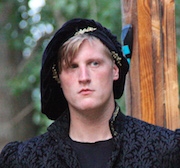
Prince Edward is the only son of Henry VI (presumably) and Queen Margaret. As such, he is the heir to the throne as long as Henry VI is king — until Henry makes an agreement with Richard Plantagenet, Duke of York, that would allow the crown to pass to York after Henry's death. This agreement strips Prince Edward of his right to inherit the throne. Henry agrees to the arrangement with York in order to stop the civil war that was killing so many Englishmen, but it infuriates Queen Margaret, and she refuses to honor it.
Prince Edward is much like his mother, a fierce defender of the Lancaster right to the throne. When Margaret goes to war with York to protect her son's right to the throne, Prince Edward is right beside her. During the play, he becomes betrothed to the youngest daughter of the Earl of Warwick — a certain Lady Anne, who might become important in a future play...
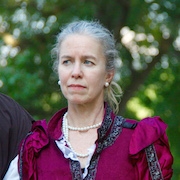
Eleanor Cobham, Duchess of Gloucester, is the wife of Humphrey, Duke of Gloucester. Humphrey is the uncle and Protector to King Henry VI, and would be the next in line for the English throne if anything were to happen to Henry. That makes Eleanor, as Humphrey says, "second woman of the realm" — second only to Queen Margaret.
Eleanor, however, is not content with second place — especially when first place belongs to the "proud Frenchwoman," Margaret. Eleanor wants Humphrey to be king, and herself to be queen. Since she has no direct way to make that happen, she finds a shady character, Sir John Hume, who can connect her with a conjuror named Roger Bolingbroke. They promise to raise a spirit that will help her in her quest for the crown. Unfortunately for Eleanor, Hume is playing both sides in this rivalry...
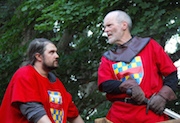
Sir Thomas Clifford and his son, Young Clifford, are much lower in rank than most other members of the nobility in this play. Sir Thomas is a baron, which ranks him below all the Dukes and Earls around him. Clifford, however, is a strong military commander, so the Cliffords are brought in when the Lancasters need some extra muscle — first to deal with the Jack Cade rebellion, and then for the first round of civil wars between the houses of Lancaster and York. They are loyal Lancastrians who serve King Henry and Queen Margaret, who is the true leader in the fight against the Yorks.
On The Side Of York:

Edmund Mortimer has been an important figure in several of the plays in this sequence. The Mortimers married into the line of Lionel, Duke of Clarence, the second son of Edward III. As a result, Edmund Mortimer was declared the official heir to the throne by Richard II, who had no children. Mortimer's claim, though, went out the window when Henry Bolingbroke — descended from the third son of Edward III, John of Gaunt — deposed Richard and made himself King Henry IV.
The rebellions by Hotspur and Owen Glendower that broke out against Henry IV's rule were aimed at putting Mortimer on the throne, since one of Mortimer's sisters, Kate, was married to Hotspur, and Mortimer himself married Glendower's daughter. That rebellion failed, however, and Mortimer was imprisoned in the Tower.
Mortimer's other sister, Anne, was married to Richard, Earl of Cambridge, who led the attempt to kill Henry V and again put Mortimer on the throne. That attempt, unfortunately for the conspirators, also failed. But the Earl of Cambridge's son — Mortimer's nephew — is Richard Plantagenet, Duke of York. And now Mortimer, dying in prison in the Tower, declares Richard Plantagenet the heir to his claim to the throne, setting the stage for the house of York to rise up once again against the current Lancastrian king, Henry VI...
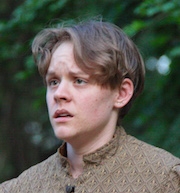
The Earl of Rutland, Edmund, is the youngest son of Richard Plantagenet, Duke of York. His father's joy, Rutland dreams of being able to go out and fight against the house of Lancaster along with his father and his brothers, Edward, George, and Richard. Rutland is too young to go out and fight, so he is stuck inside the York stronghold with his tutor when the forces of Lancaster march on them. With Young Clifford seeking vengeance for his father's death, however, Rutland is not too young to become a victim of the war...
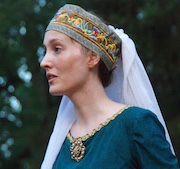
Elizabeth Woodville, Lady Grey, is the widow of Sir Richard Grey, who fought against the house of Lancaster on the side of the Yorks. When her husband was killed, their lands were seized by the Lancastrians, and then passed into the hands of the Yorks when the Yorks captured Henry VI and Edward IV became king. Elizabeth comes to Edward with a petition to have her family's lands returned to her. Edward immediately becomes infatuated with her, and when she spurns his advances — something that perhaps no woman has ever done? — the new king rashly offers to make her his queen...

Jack Cade is a commoner from Kent. Now a clothier, he previously served as a soldier in Ireland under the command of Richard Plantagenet, Duke of York. York remembers some of Cade's wild exploits against the Irish, spying on them and laughing off wounds as if they were nothing. When York is again sent to Ireland, he orders the charismatic Cade to start a rebellion in England against Henry VI. The commons rise up under Cade, striking out agains the nobility who they feel have been oppressing them for centuries. Whether by accident or design, the rebellion spins wildly out of control, threatening to destroy London and tear the country apart...
And The French:

Charles, the Dauphin of France, is the heir to the French throne. He is the son of Charles VI, the mad king of France from Henry V, younger brother of the Dauphin who died in that play. He will go on to become the next king of France, Charles VII. He is engaged in a war to reclaim territories in France that were taken by Henry V. And, with the help of Joan of Arc, he is winning...

Joan of Arc, also called Joan la Pucelle, is the daughter of a French shepherd who now is leading the French armies in their battle to retake their lands from the English. To the French, she is a holy prophetess, inspired by God and filled with holy power. To the English, she is a witch who has gained unnatural powers by trafficking with evil spirits. She is unquestionably a great warrior who turns the tide in favor of the French against the English armies led by Sir John Talbot — in part because the English forces are divided by the squabbling between their leaders, the Dukes of York and Somerset. But once the English commanders join together, the tide begins to turn again...

Louis XI is the son of Charles VII, and becomes king of France after his father. Louis is the king of France during the height of the civil war between York and Lancaster, and plays a key role in the Wars of the Roses. When the house of York captures Henry VI and the Duke of York's oldest son, Edward, is made Edward IV, the Earl of Warwick travels to France to arrange a marriage between Edward and Louis' sister, Lady Bona. But when news arrives that Edward has impulsively married Elizabeth Woodville instead, both Louis and Warwick are insulted and throw their support behind Queen Margaret and the house of Lancaster instead.
Summer 2016:
Twelfth Night
Henry VI: A Tiger's Heart
"The very best summer thing."
— Warren Greenwood, Ithaca Times
This summer, we'll be pairing the next-to-last installment in our history series with one of Shakespeare's richest and best-loved romantic comedies. All performances at Allan H. Treman State Marine Park, on Route 89 behind the Hangar Theatre.
Twelfth Night
July 7, 10, 14, 16, 22, 24 at 6 pm
Tickets on sale now!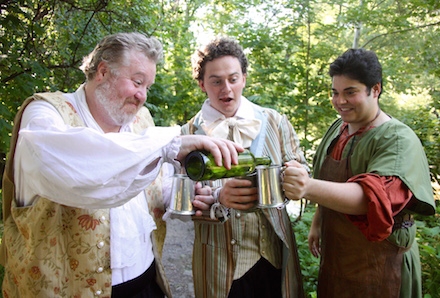
An exploration of love in all its forms, the crowning glory of Shakespeare's romantic comedies is a richly layered and endlessly entertaining play. Hilariously funny and deeply romantic, Twelfth Night features: a shipwreck, a clever heroine in disguise, twins that no one can tell apart, multiple cases of mistaken identity, a lovesick count, a lovesick countess, a pair of drunken pranksters, a duel (sort of), a pair of yellow stockings, a pirate, a fool, a madman, a bunch of lovers, a bunch of songs, one of the greatest practical jokes in all of literature, and a whole lot of smiling!
Henry VI: A Tiger's Heart
July 8, 9, 15, 17, 21, 23 at 6 pm
Tickets on sale now!
When Henry V dies and leaves his young son on the throne, the divisions in the kingdom break open and England erupts into civil war. The Wars of the Roses pit the house of Lancaster against the house of York — one led by one of Shakespeare's most formidable women, and the other driven by the ominous rise of the future Richard III.
Drawing on material from all three parts of Shakespeare's Henry VI, this sweeping epic features the first appearance of Richard III, two of Shakespeare's strongest women in Queen Margaret and Joan of Arc, the scene that gave birth to the phrase "the Wars of the Roses," a popular rebellion with the slogan "Let's kill all the lawyers!", and some of the most thrilling and intense conflicts that Shakespeare ever created.
The game of thrones heats up to boiling point in this show, so put it on your calendars now!
Get tickets now!
Ushers are still needed for a number of performances. See one or both summer shows for free! Sign up to be an usher here.
The Ithaca Shakespeare Company · Ithaca, NY 14850 · info@ithacashakespeare.org
